Quick Summary:
The comparison of Laravel vs Django has been a cause of discussion in the past. These two back-end frameworks provide a compelling case for web development. This blog will provide you with detailed information about both, covering their qualities, performance, popularity, market share, and more. The primary goal of this blog is to assist you in determining which technology is best for your needs by examining each one in detail.
The developer community appears to be divided when choosing a web framework. Software development is about creating the groundwork for concepts to be implemented. The backend framework you use will affect development problems such as security, budget, and scalability, among others. While there are many publications on the market about the finest backend framework, it all comes down to your own business needs.
Django vs Laravel is one of these options. The web framework you choose is critical since it may make or ruin your application. The framework serves as the skeleton around which your web application is built. This post aims to assist you in selecting the best back-end framework based on a variety of factors such as performance, community support, security, scalability, and more. But, before we get started, let’s look at the differences between Laravel and Django.
Laravel vs Django: Overview
Following is the overview of Laravel and Django:
What is Laravel?
Taylor Otwell built the open-source Laravel PHP web framework. Laravel is a PHP framework based on Symfony, well-known for HTML authentication, server-side processing, and templating, among other features.
You can construct applications with pre-defined architectures, configurable backend logic, web portals, templates, and full-stack applications and manage SaaS products, thanks to the fact that it is a server-side framework. Laravel is one of the most popular web frameworks today, and it follows the Model-View-Controller (MVC) model. It has amazing features that make web development easy for developers. From CMSs to simple network sites and sites, Laravel may be used to create a wide range of software sites and applications.
Laravel Features
- Artisan CLI
- Modular Packaging
- Elegant & Expressive Syntax
- Free & Open source
- Query Builder
- Restful controllers
- Eloquent ORM
- Application logic
- Migrations
- Class autoloading
- Reverse routing
- Template engine
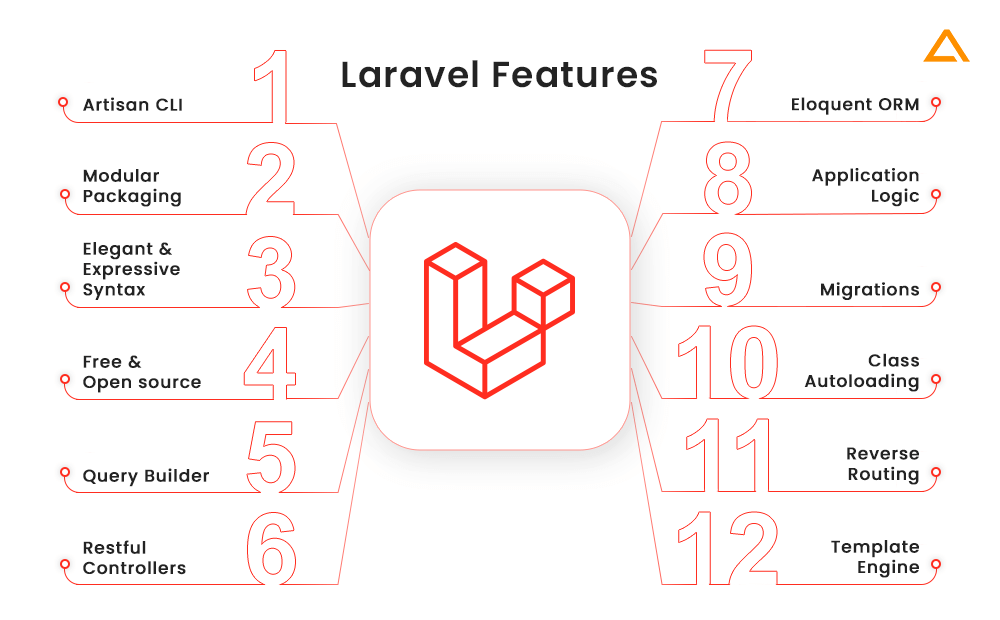
What is Django?
It is a popular open-source python-based web framework that follows the MVC model. Django Software Foundation, an independent non-profit organization, now maintains it. Adrian Holovaty and Simon Willison, web programmers at the Lawerence Journal-World newspaper, were the first to introduce Django for developing web apps. Django Reinhardt, the guitarist, is honored with the framework’s name.
Django’s main goal is to make it easier to construct complicated web applications by providing seamless integrating solutions. It’s a simple framework with stand-alone functionality for development and testing.
Django Features
- Flexibility & Versatility
- Easy management
- Fully-Featured
- Scalable
- Highly secure
- Simplicity
- Free & Open-source
- Extremely Fast
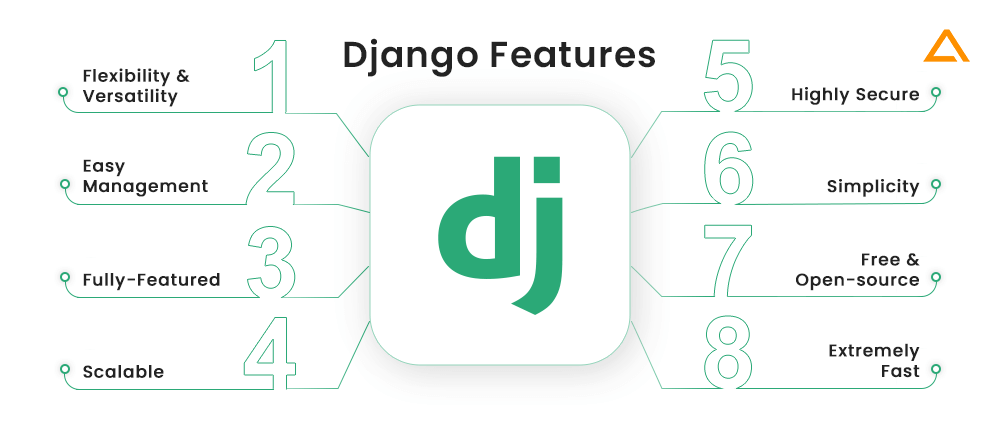
Laravel vs Django: Tabular Differences
We’ve gone over the framework’s major features and addressed the most important details. Now we’ll compare and contrast Django and Laravel on several different parameters.
| Factors | Django | Laravel |
|---|---|---|
| Developers | Adrian Holovaty, Simon Willison | Taylor Otwell |
| Initial Release | 21 July 2005 | June 2011 |
| Stable Release | 4.0.4 | 9.10.0 |
| Repository | Django | Laravel |
| Written In | Python | PHP |
| Type of framework | Web Framework | Web Framework |
| License | 3-clause BSD | MIT License |
| Development time | Extremely fast | Compared to Django much slower |
| Maintained By | Django Software Foundation | Laravel Community |
| Routing | Difficult | Simple |
| Tools Available | Various third-party tools and SEO attributes are available | Offers a Simple set of tools |
Laravel vs Django: Key Comparison
Every framework has its recommendation feature. The differences between Laravel and Django are minor. When it comes to deciding which one best meets your needs, a deeper dig is required to comprehend each one’s scope fully.
Laravel vs Django Performance Differences
One of the most important aspects to consider when creating an application is performance. Users are accustomed to the site opening in 2-3 seconds. According to an Akamai study, a one-second delay in mobile load times can reduce conversion rates by 20%. Nearly half of customers anticipate the site to load in less than two minutes. If a mobile page takes longer than 3 seconds to load, 53% of consumers will abandon it.
Whenever there is a delay of more than 4 seconds, users will never return to the website. Django is a Python-based framework that offers excellent performance and quickness. The code compilation and execution are fast and easily resolve the issues. This allows the performance optimization as well as the development process. Now let’s talk about Laravel. It comes with adequately built-in features, although it may seem like a good thing having so many components can slow down your application. So, in the end, developers are supposed to find other ways to accelerate the development process.
Also Read: Laravel performance optimization
Laravel vs Django Popularity Comparison

Both frameworks are popular, although Django is more commonly seen on websites computer-related, gadgets, research, culinary, and other topics. It is the most used web framework in developed countries, including France, Spain, the United States, and more than 30 others.
Laravel, on the other hand, is utilized on websites in the fields of arts and entertainment, the internet, commerce and industry, tourism, and more. It is a popular web framework in nations including Brazil, the United Kingdom, China, and more than 157 others. The following statistics demonstrate the popularity of frameworks.
SimilarTech Comparison between Laravel & Django
Laravel is used by 137,147 websites, while Django is used by 86,261 sites, according to SimilarTech.
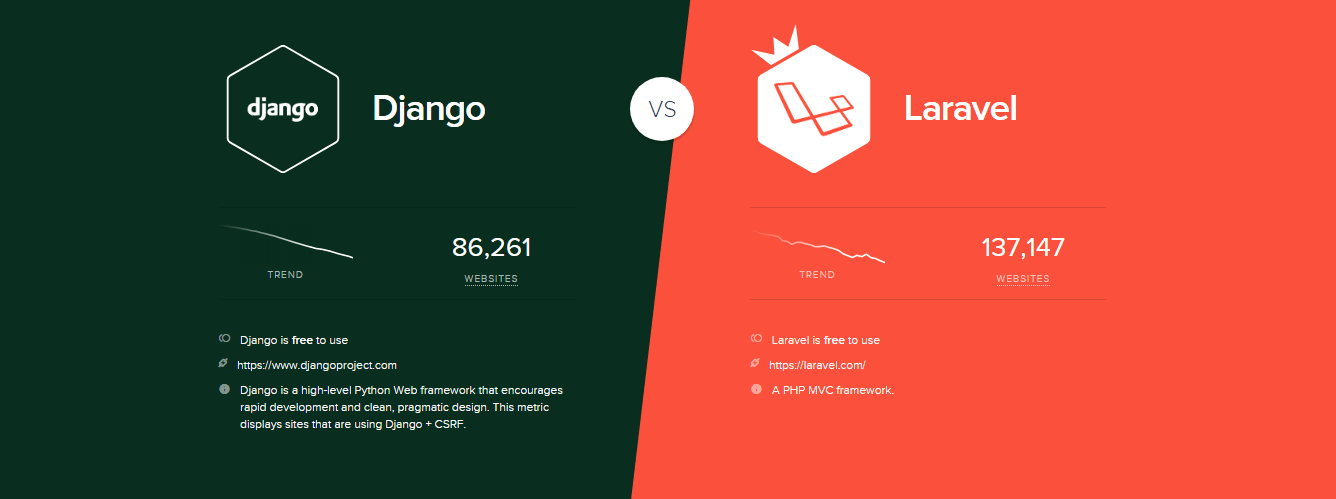
Now let’s look at Django vs Laravel market share.
In the share of the market segment, Django is falling behind Laravel.

Whereas, Laravel is used in leading top 10k sites, Top 100K, and 1M sites.
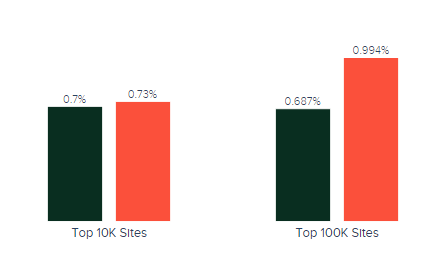
Django vs Laravel Performance Benchmark – Stack Overflow Comparison
14.99% of developers uses Django
whereas
10.12% of developers uses Laravel

In the Stackoverflow Trend comparison, we can see that Django has maintained a certain peak of curiosity among developers over the years which is only rising further, indicating its popularity and usage in current times as well. However, though Laravel started the race a little later in 2013, it got a steep increase in popularity from 2014 to 2020, after which it has declined noticeably.
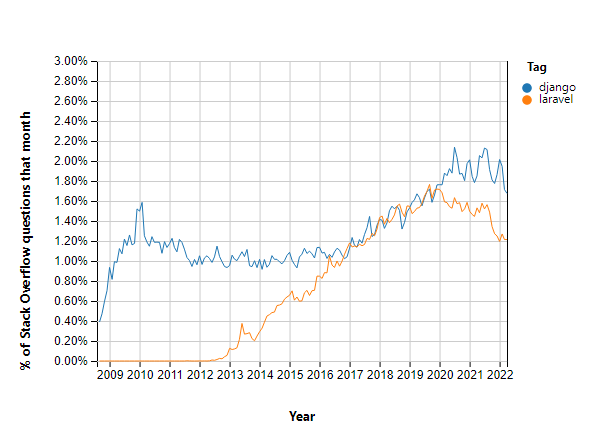
Hopefully, these stats will give you a perfect idea about the popularity of both frameworks.
Django vs Laravel Community
Django and Laravel both have thriving communities. On GitHub, these communities have a large number of contributors and frequent commits. So, if you ever get stuck, the community members can assist you. Django has 64.4 thousand stars and 27.2 thousand forks on GitHub. There are over 2000 active contributors on the site. Laravel, on the other hand, has 69.8 stars, 22.6K forks, and 500 active contributors.
Django vs Laravel Learning Curve
Individual learning curves vary greatly. Django is simple to learn if you’re familiar with Python’s syntax. It’s developer-friendly, and learning it shouldn’t take long. The developer community suggests these Django tutorials if you’re interested in learning Django.
Laravel, on the other hand, has a steep learning curve that may be overcome with the use of tools such as Lara casts and thorough documentation. Picking up the framework and mastering the PHP language should not be difficult. Laravel documentation may be found here if you’re interested in learning more about it.
Django vs Laravel Architectural Pattern Differences
It’s critical to choose a flexible framework rather than one that imposes stringent architectural requirements. It’s critical to think of the framework as a suggestion rather than a rule. Let’s take a look at Django and Laravel architectural patterns.
Django Architectural Patterns
It is built to use the MVT (Model View Template) architecture, which would be a modest variant of the popular MVC (Model View Controller) architecture. The template file comprising HTML and Django Template Language performs the controller’s role of facilitating the building of dynamic websites, which is a key distinction between the two architectures. As a result, instances where each user is expected to get a tailored newsfeed on Instagram become cheaper and simpler.
Laravel Architectural Patterns
Laravel adheres to the MVC architectural pattern, which aids in dividing tasks among developers. The MVC pattern gives you complete control over your project, which is useful for customizing it. It’s also useful for updating areas of the site without affecting the rest of the application. Additional APIs and code reusability are enabled thanks to the MVC framework. As a result, any online application can benefit from the development of permanent backend support.
“Are you looking to hire LARAVEL Developers?”
Find the best full-stack Laravel Developers in India to start your web development project within 48 hours.
Django vs Laravel Security Comparison
The development world is a challenging environment, and programs are exposed to many cyber assaults and vulnerabilities. As a result, it’s critical to test the framework for various cyberattacks such as CSRF, cross-site scripting, and SQL Injection. Django is very serious about the security of the applications, and it assists developers in avoiding typical web development mistakes and helps implement security best practices. While Laravel covers the essentials of security, it does not match Django’s level of security. That’s why NASA’s website, for example, is built with Django.
Also Read: Laravel Security Best Practices
Laravel vs Django API Integration
Laravel employs a routing system that includes built-in support for creating a variety of custom APIs. This is a simple method for creating backend mobile and online application solutions. On the other hand, Django does not make it simple to create REST APIs. When compared to Laravel, the routing method is harder. The development of Application Programming Interfaces necessitates the expertise of a seasoned Django programmer.
Django vs Laravel Salary Comparison
Salary comparison is an important aspect to discuss especially if you’re an aspiring web app developer looking to build a career in one of these programming languages or frameworks. Both Django and Laravel have different strengths and different demand points in the market. The average salary for both frameworks is neck-to-neck however it is important to understand what the roles expect out of a developer, before making that decision.
Django is gaining popularity with the rising need of developing apps that can make use of artificial intelligence and machine learning techniques to create modern, scalable, and enterprise-grade solutions. The community of Django is active as well, which makes it easy to be spotted by potential recruiters.
Laravel on the other hand is better suited for small apps and websites since it’s beginner-friendly. Laravel can be a good entry point for your web app development career after which you can shift to more complex or advanced frameworks like Django.
The average salary of a Django developer in the US is $89,736/yr.
The average salary of a Laravel developer in the US is $90,501/yr.
Django vs Laravel Jobs Availability
Another important aspect to consider as an aspirant is job availability for both these platforms. There are many credible recruitment sites where you can check the job postings for these two technologies. Job availability would directly be impacted by the popularity and demand of Laravel vs Django. However, currently on LinkedIn, the job availability count for Django and Laravel is as:
There are 9,500 results available on LinkedIn for Django developers.
There are 12,135 results available on LinkedIn for Laravel Developers.
Laravel vs Django Popular Companies
Following are some popular companies that use Laravel & Django in their stack.
Laravel is used in the tech stack of the following few companies

- BBC
- Bitpanda
- Lenovo
- Wikipedia
- RazorPay
- FedEx
- eCommerce
- y42
- 9GAG
Tech Giants such as the following use Django in their tech base
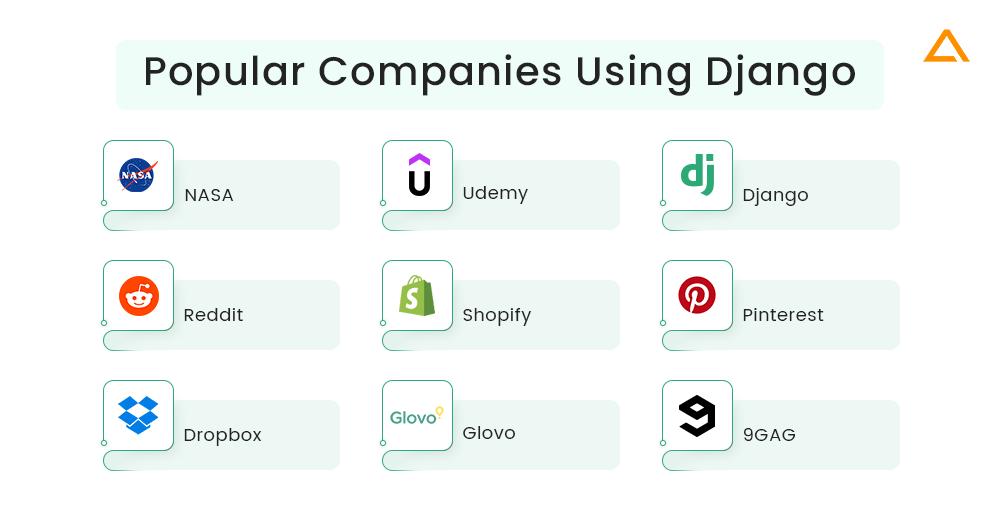
- NASA
- Udemy
- Django
- Shopify
- Dropbox
- Glovo
- 9GAG
Laravel vs Django Use Cases
Following are the uses cases of Laravel and Django
Use Case of Laravel

- Web applications that are hosted as a service
- Web apps that allow you to watch videos on demand
- Web apps for e-learning
- Web management systems for stock trading
- Apps on the web with features for reward and recognition
- Multilingual CMSs
- Apps for monitoring the performance of a website that is hosted on your computer
Use Case of Django
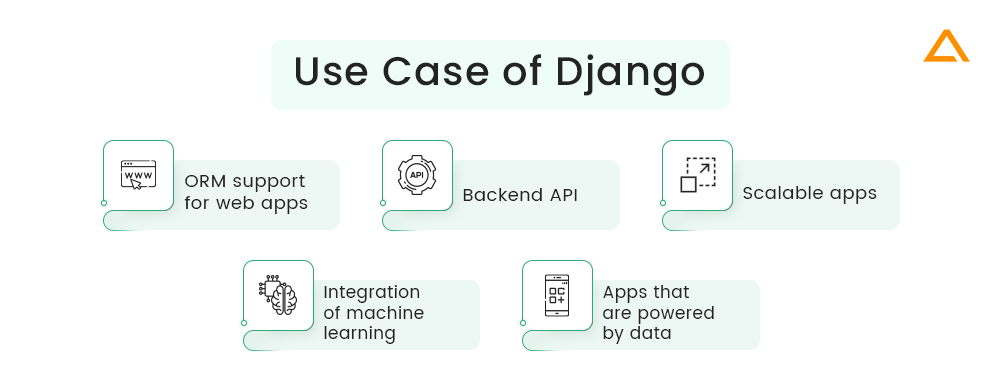
- ORM support for web apps
- Backend API
- Scalable apps
- Integration of machine learning
- Apps that are powered by data
Laravel vs Django Scalability
Laravel inherits scalability because it is PHP-based and caters to fast-developing enterprises. By selecting a solid database and load balancer, Laravel can achieve massive horizontal scaling. Leveraging MySQL, AWS, and some advanced buffering technologies, Laravel apps can be scaled to meet the user’s needs.
Django’s scalability is seen in the apps that use it in the technology stack; Django is used by IT giants such as NASA. It seamlessly integrates with various technologies while delivering improved throughput and loading times. When it comes to scaling, it’s critical to optimize aspects like pictures, CSS, databases, and other resources while also balancing the demand. On top of that, you’ll need to make room for scaling via CDN and cloud options. Django, if anything, makes all of these tasks easier. If you want to scale up your site application, in the long run, it’s one of the greatest frameworks to choose.
Django vs Laravel 3rd Party Plugins, Library Support
The framework allows you to integrate a variety of libraries. Instead of developing code from scratch every time, these libraries provide reusability and more features and benefits to an application. You can save a lot of time by using these libraries, making testing easier, lowering costs, and getting your app to market faster. This is why it’s critical to know which web framework offers better libraries: Django vs Laravel.
Django is a web framework with a large package library with everything you need. Many self-contained packages provide functionality that can be reused across various projects. Django-cors-headers, Django Filters, Django Storages, and Django Rest Framework are just a few Python-based libraries that you can utilize in a Django project.
Laravel, on the other hand, has a robust library set that can be used to create a variety of websites and applications. Laravel comes with a wide range of pre-installed libraries, including an Authentication Library. Other frameworks, such as Symfony and CodeIgniter, do not provide this functionality. Entrust, Laravel Debugbar, Spatie, and Socialite, to mention a few, are all excellent third-party packages for optimizing app speed in Laravel.
Django vs Laravel Microservices Compatibility
Because it is PHP-based, Laravel enables microservice architecture. The program is divided into distinct blocks, each with its own set of responsibilities and tasks to complete. These blocks communicate with one another utilizing a language-independent API, making Laravel microservices compatible. In recent years, microservices have been so popular that developers have created the lumen framework, which serves a similar goal but is a lighter version of Laravel.
Django is a great backend solution for microservices architecture because of advantages like rapidly developing, built-in security, and flexibility. While Django applications can typically extend enormously, breaking them down into manageable microservices functionality is a smart idea and is made easier using this framework. You might want to use Django in one of your microservices to add machine learning capabilities to your project.
Laravel vs Django Coding Structure
The difference in the coding structure of both frameworks can be seen in the following example of FOR Loop
Laravel Coding Structure
//php
for ($i = 0; $i < count($a); $i++)
{print_r(a[i])}Django Coding Structure
//python
for x in list:
print("List is ===>",list)Laravel vs Django Database Support
SQLite, SQL, MySQL, and Postgres are the four database systems Laravel presently supports. Interacting with these databases is simply because of the fluent query builder, Eloquent ORM, and raw SQL. Laravel makes it easier to set up multiple database connections.
Whereas Django supports MariaDB, Oracle, SQLite, PostgreSQL, and MySQL databases. It works very well with database backends from third parties and these five databases. Furthermore, if the project requires it, Django allows you to use numerous databases at once. It’s safe to state that the framework will not let you down when it comes to creating a database for your application or website.
have a unique app Idea?
Hire Certified Developers To Build Robust Feature, Rich App And Websites
Wrapping Up!
We examined numerous aspects of both web frameworks in this blog, covering performance, coding structure, Microservices compatibility, Use Cases, Scalability, and more, with the hopes of assisting you in deciding which framework is best for your forthcoming project. To summarize,
Django is a programming language that can be used to create web applications:
- For developing dynamic and personalized social media networks, AI-ML applications, and more.
- Developing safe B2B applications
- Applications of Data Science
- Education, research, scientific, and other software packages.
Laravel, on the other hand, is a perfect choice if you wish to build:
- Application on a small scale
- CSS and JavaScript web applications that are tailored to your needs
- Interactive content applications
- On a tighter budget, an advanced application.
- Projects involving technology, art, entertainment, and other topics.
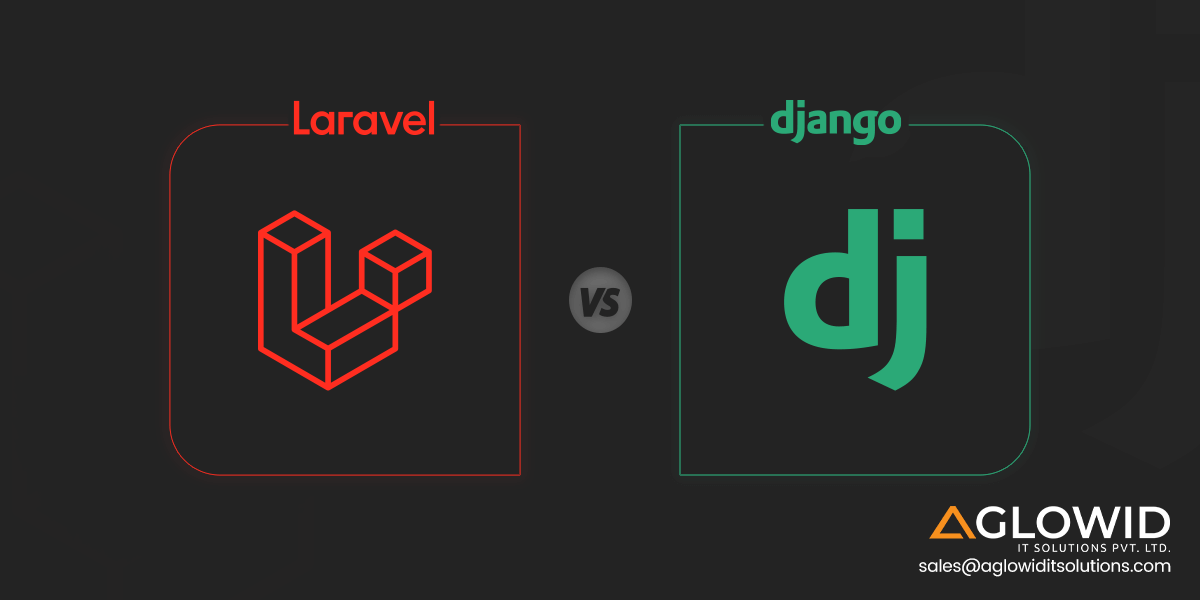




 Say
Say